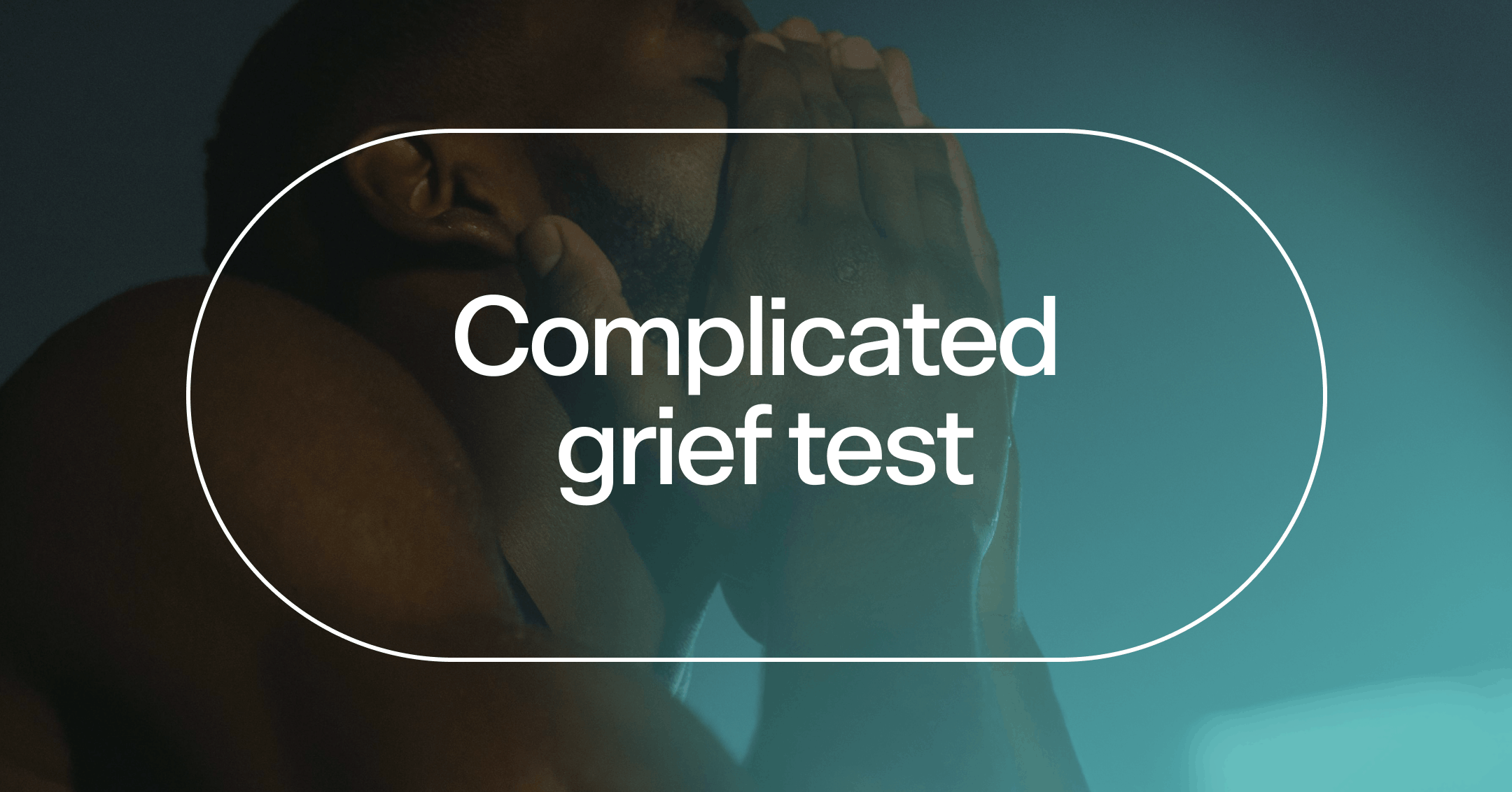An adjustment disorder occurs when a person struggles to cope with or adjust to a significant life change or stressor, leading to overwhelming emotions, like anxiety, sadness, or hopelessness.
The length of time adjustment disorder symptoms last can vary. For some, symptoms may be short term and improve within six months. For others, they may last longer than six months if the stressor continues or isn’t addressed.
With the right treatment, you can recover from adjustment disorder. Treatment often includes self-care, therapy, and sometimes medication, all tailored to your needs by your provider.
Moving to a new city, losing a loved one, or navigating a divorce can be emotionally challenging. Change is a natural part of life, but that doesn’t mean it’s always easy.
For some people, adapting to major life transitions is especially overwhelming and may lead to ongoing symptoms that can affect daily functioning. If you’re feeling this way after a life transition, you might be experiencing what’s known as an adjustment disorder.
Adjustment disorders aren’t a sign of weakness, and they aren’t something you can just “get over.” In fact, around 7% of the general population is diagnosed with an adjustment disorder each year. Everyone processes change differently, and that’s OK. It’s important to recognize that struggling with major life transitions is common and doesn’t mean you’re failing to cope. Seeking support from a mental health professional can help you work through these challenges in a healthy way.
What types of adjustment disorders are there?
Adjustment disorder is a condition where people have a hard time coping with life changes or stressful events. These struggles can be mild or serious enough to interfere with everyday life. The condition is divided into different types based on the symptoms someone might experience.
Adjustment disorder with depressed mood: You might feel constantly sad, hopeless, or like you’ve lost interest in things you usually enjoy. It can also be hard to focus, making everyday tasks feel overwhelming.
Adjustment disorder with anxiety: You may experience nervousness, constant worry, or restlessness and find it difficult to relax or sleep. The stress from life changes may leave you feeling on edge.
Adjustment disorder with mixed anxiety and depressed mood: You might feel both anxious and down at the same time, overwhelmed by the changes happening in your life. This mix of emotions can make it hard to cope or manage your day-to-day activities.
Adjustment disorder with disturbance of conduct: You may find yourself acting out, breaking rules, or becoming defiant in response to stress. These actions can feel like a way to express frustration or regain control when life feels out of balance.
Adjustment disorder with mixed disturbance of emotions and conduct: You might experience a combination of emotional struggles (like anxiety or sadness) and behavior changes (like acting impulsively or being reckless) as a way of coping with life changes.
Adjustment disorder unspecified: You may feel a general sense of distress or difficulty adjusting to life changes, but the feelings don’t fit neatly into any of the other categories. It can leave you feeling uncertain about what’s happening but still make it hard to adapt.
If any of these resonate with you, it might be helpful to talk to a mental health professional who can guide you through the process of adjustment and healing.
The care you need, when you need it
Learn how Rula can support your mental health journey
Who’s at risk for an adjustment disorder?
Adjustment disorders can affect anyone dealing with significant stress or life changes. They’re common across all age groups, including children, teens and adults.
Certain circumstances may increase the risk of developing an adjustment disorder, including:
Major life changes: Moving to a new city, starting or losing a job, a divorce or the end of a relationship, or retirement
Unexpected stressful events: Sudden illness or injury, loss of a loved one, financial crises, natural disaster or accident
Socioeconomic factors: Being between the ages of 15 and 25, being single, having a low educational level, or living in urban areas
Childhood stress: Experiences such as being bullied or having difficulties in school
Ongoing stress: Long-term challenges, like caring for a sick family member or dealing with financial difficulties
Are adjustment disorders a mental health condition?
Yes, adjustment disorders are mental health conditions. They involve emotional or behavioral responses to identifiable stressors, such as major life changes or difficult events, that affect a person’s ability to function.
The criteria to be diagnosed with an adjustment disorder includes:
Symptoms that appear within three months of a major life change or stressor
Symptoms that can’t be explained by another medical condition or grief
A response that’s out of proportion to the stressor
A response that causes difficulty in daily life
Children and teens often experience different symptoms of adjustment disorder compared to adults. Children tend to have more behavioral symptoms, like acting out, while adults are more likely to experience symptoms of depression or anxiety.
It’s natural for some people to feel uncertain when diagnosed with adjustment disorder. However, adjustment disorder is a valid diagnosis that focuses on how life changes or stressors temporarily affect a person’s ability to cope. Unlike conditions like post-traumatic stress disorder (PTSD) or depression, which involve specific symptoms (like trauma or prolonged mood disturbances), adjustment disorder is about the emotional response to immediate life events. Understanding this diagnosis can help guide appropriate treatment and support, allowing you to navigate stress in healthier ways.
How long do adjustment disorders last?
Symptoms of an adjustment disorder usually appear within three months of a stressful event and tend to resolve within six months. However, if the stress continues or isn’t addressed, an adjustment disorder may become chronic and lead to other mental health conditions, like post-traumatic stress disorder or anxiety.
How are adjustment disorders treated?
With appropriate treatment, it’s possible to recover from an adjustment disorder. Treatment can help you identify the source of your stress, develop healthy coping mechanisms, and manage adjustment disorder symptoms.
Adjustment disorders are typically treated with a combination of self-care strategies, talk therapy, and, in some cases, medication. It’s important to work with a provider to determine if medication is right for your unique needs.
These are some self-help strategies that may be effective for managing adjustment disorder:
Journaling: Writing about your thoughts and feelings can help you process emotions and gain perspective on your stressors. For example, try writing about what’s causing you stress and explore possible solutions or coping strategies.
Daily Movement: Incorporating physical activity into your day, like walking, stretching, or yoga, can help reduce stress and improve your mood. Even a 15-minute walk in nature can make a big difference in how you feel.
Self-Compassion: Practicing self-kindness, especially during difficult times, can reduce feelings of guilt or self-criticism. For example, when you make a mistake or feel overwhelmed, remind yourself that it’s okay to not be perfect and treat yourself with the same compassion you’d offer a friend.
Mindfulness: Engaging in mindfulness practices like deep breathing, meditation, or grounding exercises can help you stay present and manage overwhelming emotions. For example, focus on your breath for a few minutes each day to center yourself and reduce anxiety.
While these self-help strategies can be helpful in reducing the intensity of symptoms associated with adjustment disorder, they are not a substitute for professional therapy, which can provide more tailored support and guidance.
Common therapeutic treatment approaches to address adjustment disorder include:
Cognitive behavioral therapy (CBT): A form of talk therapy, CBT can help you to build coping skills, manage emotions, and learn problem-solving skills.
Family therapy: When children and teens are diagnosed with an adjustment disorder, family therapy can help to improve communication and increase support.
Dialectical behavioral therapy (DBT): DBT focuses on mindfulness, self-acceptance, and learning how to develop healthy coping skills.
Stress management techniques: Relaxation exercises like deep breathing and meditation can help to reduce stress and improve your mood.
Social support: Being part of a support group, either online or in person, can provide protection and guidance when stressful situations arise.
With the right combination of self-care strategies and professional support, you can effectively manage adjustment disorder and work toward recovery.
One overlooked factor that can impact treatment outcomes is the importance of a client’s support system. Feeling understood and supported outside of therapy can significantly influence progress with adjustment disorder.

Brandy Chalmers, LPC
Clinical reviewer
Find care with Rula
Living with an adjustment disorder can feel overwhelming. But with the right support, it’s possible to learn how to manage your symptoms in healthy ways and find balance.
With Rula, you can connect to a diverse network of therapists — including specialists in adjustment disorders and related mental health conditions. In just a few clicks, you can book an appointment to meet with a therapist via live video session. And, our network of over 15,000 therapists means you can be seen as soon as tomorrow.
Rula's editorial process
Rula's editorial team is on a mission to make science-backed mental health insights accessible and practical for every person seeking to better understand or improve mental wellness.
Members of Rula’s clinical leadership team and other expert providers contribute to all published content, offering guidance on themes and insights based on their firsthand experience in the field. Every piece of content is thoroughly reviewed by a clinician before publishing.




